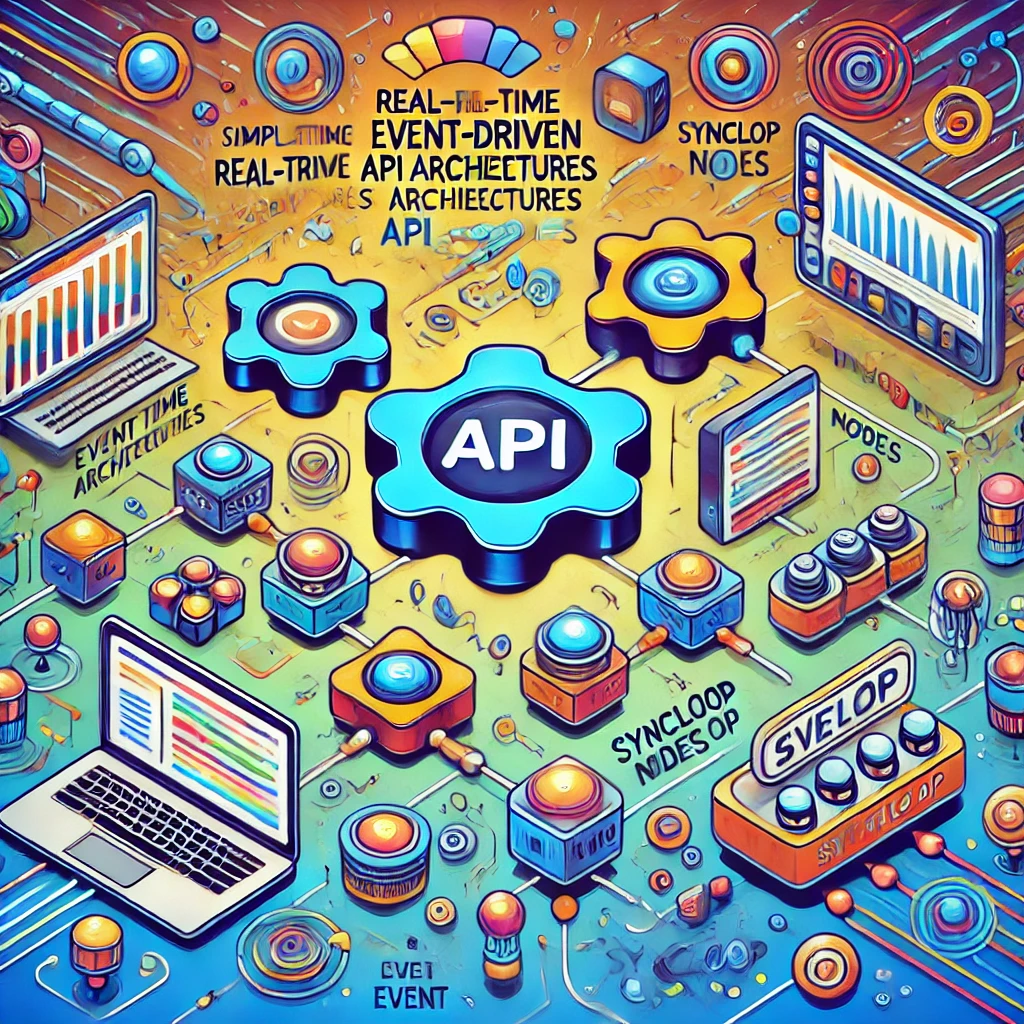Simplifying Real-Time Event-Driven API Architectures with Syncloop

Syncloop provides a powerful platform for designing and managing real-time event-driven APIs, simplifying the complexities of implementing such systems. This blog explores how Syncloop supports event-driven architectures and best practices for designing APIs that leverage real-time events effectively.
The Role of APIs in Event-Driven Architectures
In event-driven architectures, APIs facilitate:
- Event Production and Consumption: APIs produce events when a specific condition occurs and allow consumers to subscribe to these events.
- Real-Time Communication: APIs transmit data instantly between systems and applications.
- Workflow Automation: APIs trigger automated workflows and processes based on event data.
- Integration: APIs enable seamless integration between diverse systems and platforms.
Challenges in Event-Driven API Architectures
- Complex Event Handling Managing multiple event sources and ensuring consistent processing.
- Scalability Handling high event throughput and maintaining performance under load.
- Real-Time Processing Ensuring low-latency communication and action-triggering.
- Error Handling Managing failures and retries in asynchronous communication.
- Monitoring and Debugging Gaining visibility into event flows and identifying issues.
How Syncloop Simplifies Event-Driven API Architectures
Syncloop provides tools and features that make it easier to design and manage event-driven architectures:
- Event-Driven Workflow Automation Design workflows that trigger actions based on events, such as database updates or user actions.
- Real-Time Event Streaming Support for real-time data streams and low-latency event processing.
- Dynamic Data Mapping Transform event data to ensure compatibility with different systems.
- Asynchronous APIs Build APIs that handle asynchronous communication and ensure message delivery.
- Monitoring and Analytics Track event flows, API performance, and error rates with real-time dashboards.
- Retry and Error Handling Automate retries for failed events and handle errors gracefully.
Steps to Design Real-Time Event-Driven APIs with Syncloop
Step 1: Identify Event Sources
Determine the systems or actions that generate events. Examples include:
- User interactions, such as clicks or form submissions.
- Changes in database records.
- Sensor data updates in IoT systems.
Step 2: Define Event Triggers and Actions
Specify the conditions that trigger events and the actions to be taken. For example:
- Trigger: A new user signs up. Action: Send a welcome email and create a user profile in the database.
- Trigger: A sensor detects high temperature. Action: Notify the administrator and activate cooling systems.
Step 3: Build API Endpoints
Use Syncloop’s API builder to create endpoints for event producers and consumers. For example:
- /events/publish: To publish new events to the system.
- /events/subscribe: To subscribe to specific event types or topics.
Step 4: Implement Data Transformation
Use Syncloop’s dynamic data mapping to transform event data into the required formats for downstream systems. This ensures compatibility and reduces processing errors.
Step 5: Configure Asynchronous Communication
Enable asynchronous API workflows using Syncloop’s features to:
- Queue events for reliable delivery.
- Process events independently of their arrival order.
- Retry failed events automatically.
Step 6: Monitor and Optimize
Track event flows using Syncloop’s monitoring tools. Analyze metrics such as:
- Event processing time.
- Latency in API responses.
- Error rates and retry success rates.
Best Practices for Event-Driven API Architectures
- Adopt an Event-First Design Focus on defining events and their payloads before designing workflows.
- Ensure Scalability Use load balancers and auto-scaling mechanisms to handle high event volumes.
- Optimize for Low Latency Minimize delays by choosing efficient communication protocols like WebSockets or gRPC.
- Implement Robust Error Handling Use retries, dead-letter queues, and alerts to manage failed events effectively.
- Leverage Event Batching Batch events where possible to improve throughput and reduce processing overhead.
Example Use Case: Real-Time Inventory Management
A retail platform implements a real-time inventory management system using Syncloop:
- Event Sources: Sales transactions, warehouse updates, and supplier deliveries generate events.
- Event Triggers: Low inventory levels trigger alerts to restock items.
- Real-Time Processing: APIs instantly update inventory records and notify stakeholders.
- Error Handling: Failed inventory updates are retried automatically, and unresolved errors are logged for manual review.
- Monitoring: Syncloop’s dashboards track event flows and API performance to ensure seamless operation.
Benefits of Using Syncloop for Event-Driven APIs
- Simplified Workflows: Automate complex event-driven processes with visual tools.
- Enhanced Scalability: Handle growing event volumes with ease.
- Real-Time Responsiveness: Ensure instant reactions to events for improved user experiences.
- Improved Reliability: Robust error handling ensures event delivery and processing consistency.
- Comprehensive Insights: Gain visibility into event flows and system performance.
The Future of Event-Driven Architectures
Event-driven architectures are becoming a cornerstone of modern application design, enabling real-time responsiveness and adaptability. With Syncloop’s advanced features, organizations can build efficient, scalable, and reliable event-driven APIs, empowering them to meet the demands of dynamic application ecosystems.
Image Description
A conceptual illustration showing a real-time event-driven API architecture powered by Syncloop. The image highlights event sources, workflows, and monitoring tools that ensure low-latency event processing and reliable communication.
Back to Blogs